Over the years we've clocked up hundreds of thousands of miles in all weather conditions and on various road conditions, testing tyres. With an eclectic selection of everything from sturdy commuting tyres to super-fast race rubber, these are our picks of the best road bike tyres you can buy.

Best tubeless road bike tyre: Continental Grand Prix 5000 S TR

Best road bike tyre for going as fast as possible and racing: Vittoria Corsa Pro Speed TLR G2.0

Best value for money: Hutchinson Challenger TLR tyres

Best tyre for ultimate grip in wet weather: Michelin Power Cup Tubeless Ready Tyre 700x28

Best for puncture protection: Vittoria Ridearmor TLR Tyre

Best money no object tyre: Challenge Criterium RS Handmade Tubeless Ready Road Tyre

Best bike tyre for commuting: Schwalbe Marathon Plus Tyre

Best 650B road bike tyre: Compass 650B x 48 Switchback Hill Extralight TC

Best road bike tyre for rough roads: Panaracer GravelKing Slick TLC
As Specialized famously said: "Whether you're riding a 2000-mile route of Le Tour de France or 40 miles on a Saturday, only one inch really matters—your contact patch".
Here at road.cc we believe that tyres are one of the most cost-effective upgrades you can make to a bike, whether you're searching for "free" speed, more grip, increased durability or just fewer of those dreaded punctures.
Even the very best bike wheels can be let down when clad in poor rubber, but before purchasing new tyres there are a couple of things to check:
Firstly, will you be fitting your tyres to tubeless wheels? Most of these will require special rim tape to stop the sealant and air from escaping.
Secondly, how much clearance does your frame have? Many bikes designed for racing, especially models with rim brakes, will be limited to 28mm; but as the trend for wider rubber really accelerated in the 2020s, we've found that more and more of the best road bikes have space for 30mm or more nowadays.
If you have a gravel bike with tons of clearance, then we have a separate guide for the best gravel tyres we've tested.
How do we review tyres
Reviewing tyres takes time, which is why road.cc reviewers ride with any test tyres for at least a month before submitting their verdicts. By putting the tyres through various different riding conditions and scenarios, we can then write up a thorough report of each.
Our experienced reviewers have to assess various factors such as the construction quality, durability, rolling resistance claims, weight, puncture-proofness and value, while also taking into account similar products when assessing how good or bad something is. We believe that this comprehensive evaluation provides valuable insights into whether the tyres live up to their marketing claims in everyday riding conditions, and whether they are easy to get on your rims in the first place!
It's worth noting that our reviews are just that: reviews, not lab tests. Without acess to specialist equipment like the folks at Bicycle Rolling Resistance or Wheel Energy, we're not claiming to know exactly whether one tyre is 0.1 watts faster than another. Scientific test results are really useful when it comes to tyres, but we still think observations about ride quality, grip and even how easy they are to get on or off are also useful and valid.
Why you can trust us
When it comes to road.cc buyer's guides, we will only ever recommend products that fared well in reviews and all of the tyres featured here scored the near-perfect 4.5 out of 5 stars or more overall from our reviewers, indicating very good, excellent or exceptional quality according to our reviewers' opinions.
Our reviewers are all experienced cyclists, and so are the road.cc team members who put these guides together. That means you can be sure the product selections are our genuine top picks, not just a round-up of things we can make a commission from.
With all that said, it's time for our selections. We've picked out some best-of-the-best options (which you'll see in the quick links above) and below these we've also chosen plenty more of our road tyre recommendations. There was a lot to choose from, hence the longer list than some of our buyer's guides,
If you've already decided on your next tyres and want to take your upgrading even further, then you can also check out our recommendations of the best road bike wheels too.











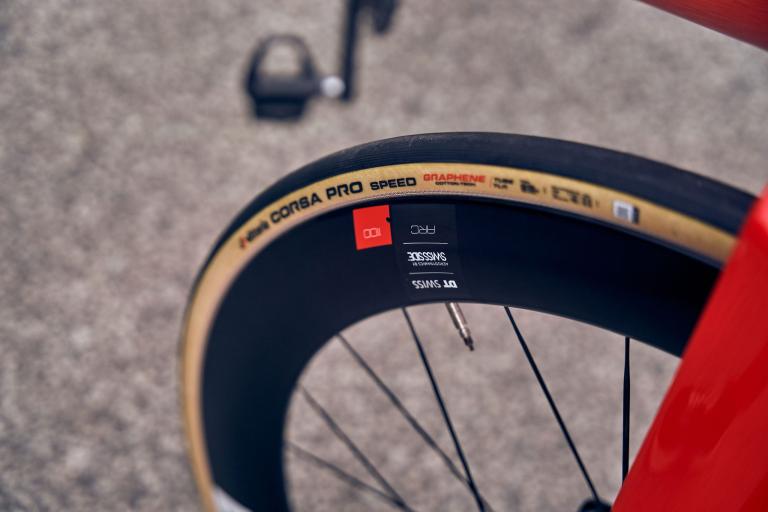

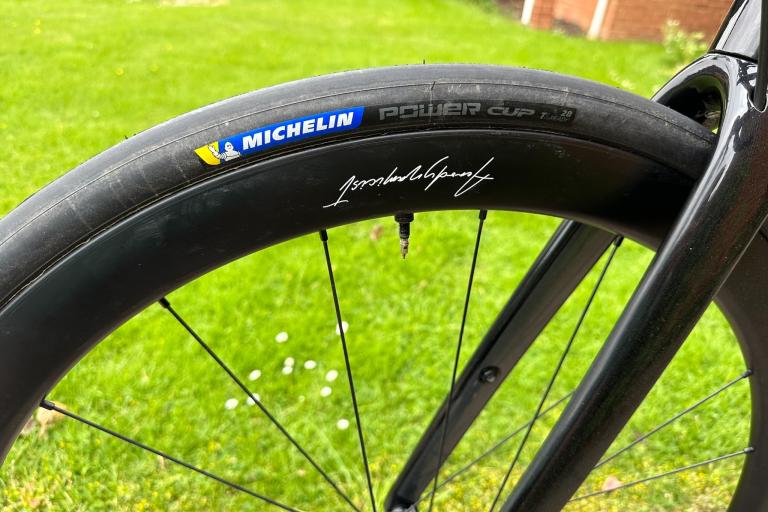
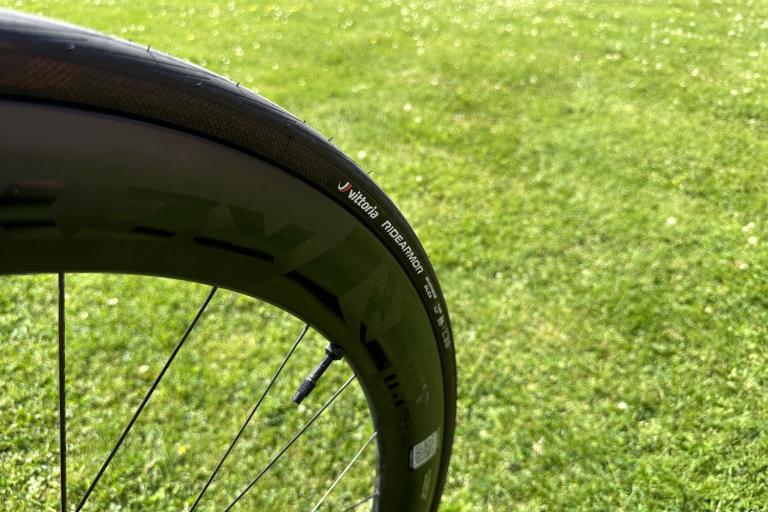

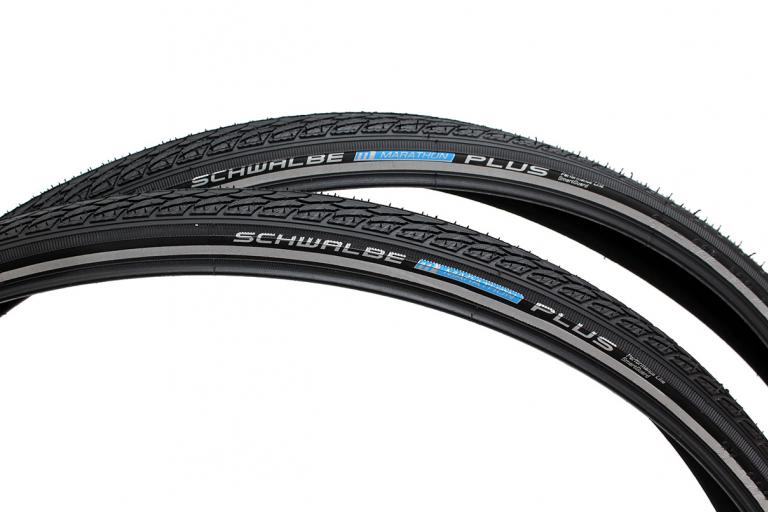
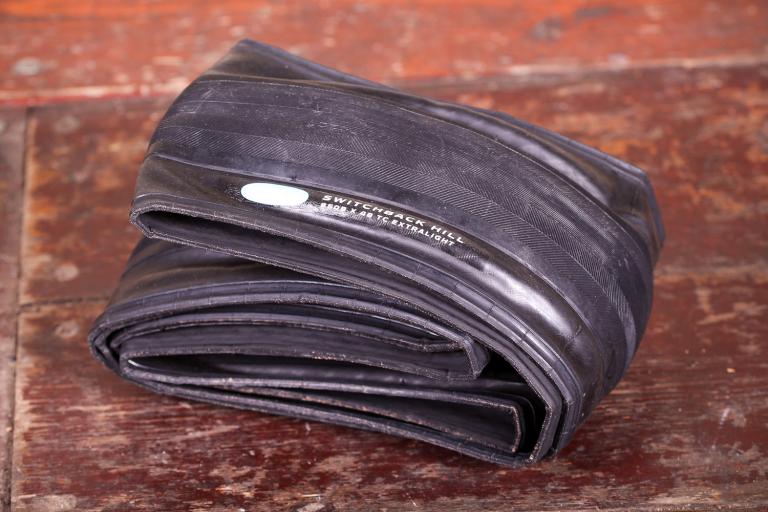
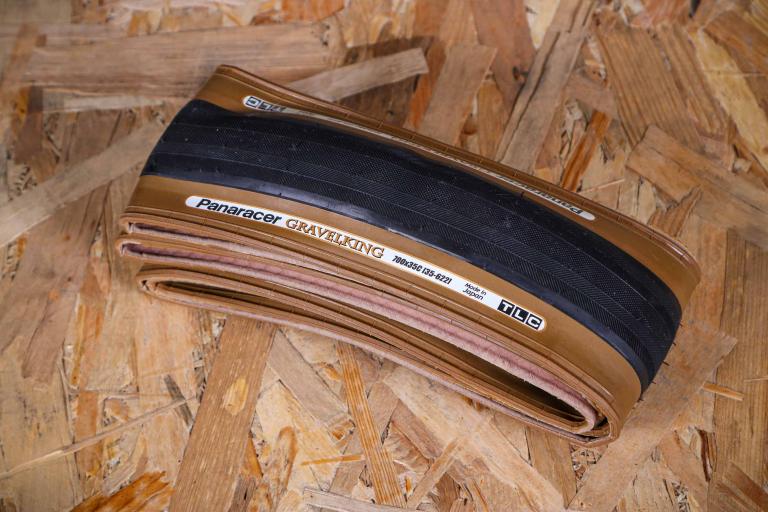
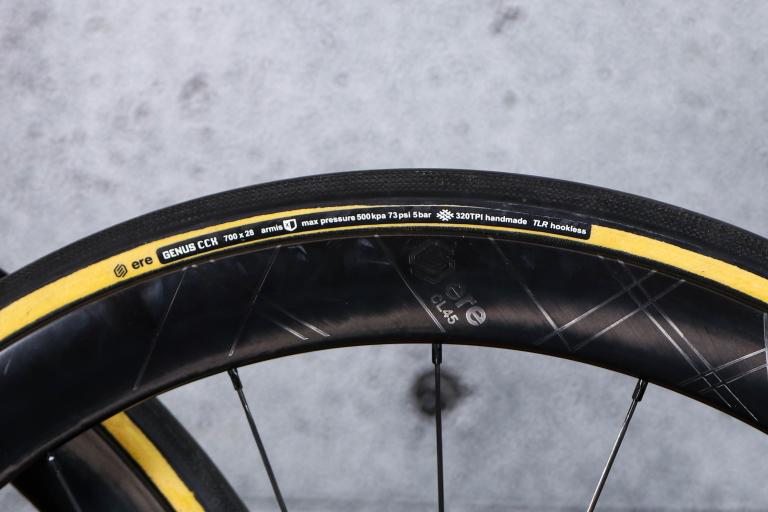
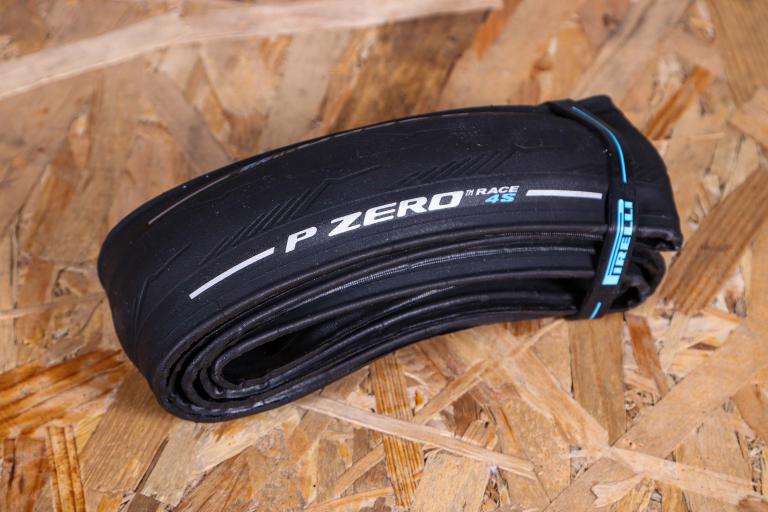
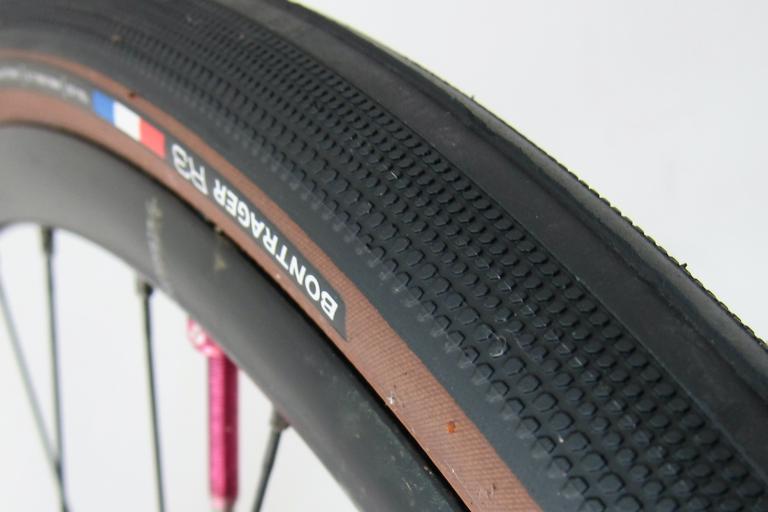
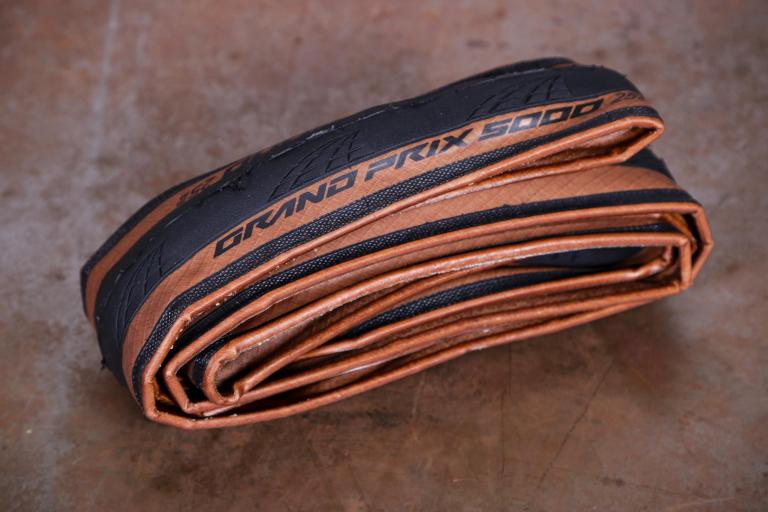
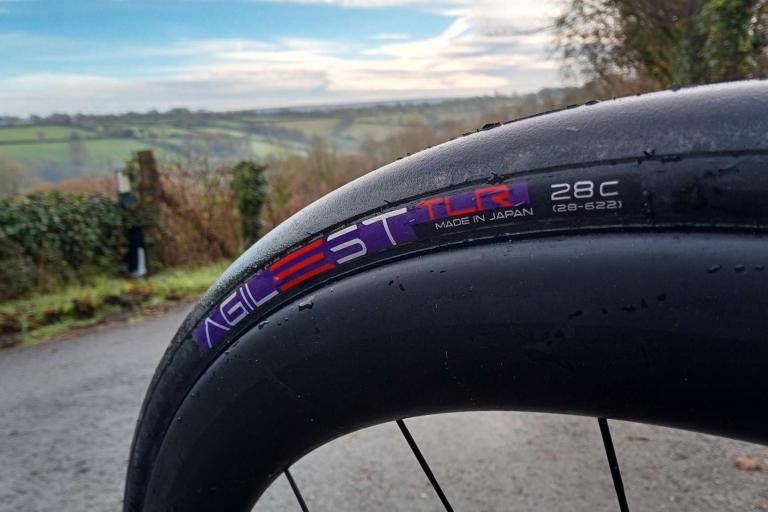

Add new comment
32 comments
Schwalbe Ones seem fine to me. I'm obviously not discerning enough.
From experience, I'd say commuters are better off with standard Marathon tyres rather than the Pluses. Really they are both so puncture resistant that the only thing that will go through the carcass is nails and screws, which has happened to me with the Pluses in the past, then you're stuck at the side of the road (usually in the wet) wrestling with the tyres to get the inner tube changed. The standard Marathons are cheaper, with much lower rolling resistance and are far, far easier to fit.
I've seen a few defeated by 1/4" thorns.
See my other comment down below. Pack 3 velcro straps in your saddle bag. Use them to work _and retain_ slack over to one point of the wheel.
Have used Marathons on commuter and touring bike.for decades. I wouldn't use anything else. Fit for purpose. Also good grip and reflective strip helpful. I've only really got punctures when the tyres were very worn. Plusses only useful for hire bikes!
The Hutchinson Challenger, at £49.46 is best value for money, but the Vittoria Corsa Pro, at £47.99, gets an X for price? Surely that can't be right?
Firstly, I think reviews are based on RRP, which may be different from the best available price.
Secondly, I think whatever web scraper road.cc uses has got itself in a muddle. If you actually click the link, it takes you to a tyre that does not cost £47.99 - it's a page for a tyre with an RRP of £80 and on sale for £38.39 (only in stock in 23mm) (at time of writing). A say "a tyre" because the tyre is neither the "Vittoria Corsa Pro Speed TLR" (pictured above) nor is it the "Vittoria Corsa Speed G+ Isotech Foldable Tubeless Ready" which road.cc have reviewed in full (linked above). (It is an intermediate model - the Corsa Speed G2.0 TLR. Newer than the original G+ but not the latest Pro model).
The "Vittoria Corsa Pro Speed TLR" has an RRP of £90 and available online for ~£80, so definitely is fair to call it an expensive tyre.
I got the tubed versions of the Challengers for about £30 each (plus they will last you far far longer than the Corsa's)
Nearly all tubeless. What about tubes? I know tubeless is all the thing but I have gone back to tube type tyres for road, after 2 years on tubeless. The sealant just doesnt work at the high pressures used for road tyres. And now with TPU tubes, my Conti GP5000 tyres are just as fast, weigh slightly less, and are far more puncture resistant than the 5000 S TRs that they replaced.
Nick, you were most likely using the wrong sealant.
We could really do with a sealant test.. I know Stu Kerton rides hard tyres so he's well placed for such a test. I've gone through half a dozen sealants over the years and I can tell you that Bontrager TL and Effetto Mariposa Espresso are my go to 'two' sealants.. I'm sure others do work, but I've used too many that haven't so I'll stick with those two. Both of which I find will seal up at around 80psi just fine..
I've done well over 1000km on my Hutchinson challengers.. Absolutely love them. 1 puncture (riding on London streets) but so much more grip and feel than the gaterskin hardshells they replaced. Feel much faster too as a bonus they're much cheaper too. Definitely recommend them.
The article mentions tyre clearance in the frame as well as "leave room for mudguards" with tyres fitted to bikes able to take them. I have long-standing questions about these aspects of tyre fitting that I never seem able to find a fully convincing answer to.
1) How much of what kind of tyre clearance is minimum and what determines those figures. The article mentions 3mm but is this all round the tyre or just to the sidewalls?
What particular factors determine the figure? Is it just the possible side-to-side flex of the wheels or are there other factors as well?
2) Some all-terrain bikes come with not just wide and slightly knobbled tyres but mudguards to fit. Such bikes are meant for both roads and tracks like canal paths or those in forests. But many argue that mudguards + track detritus such as branch bits risk a wheel jam and crash.
How much risk is there in practice? What methods are there for preventing track detritus getting between wheel and mudguard enough to cause a jam?
Does anyone recall the small wire devices attached to the brake bridge bolt that were set to a fag paper clearance to the tyre, to push off detritus so jams didn't occur? Is there such a device for disc frames without brake bridge bolt holes?
*********
I have two racey style bikes that have no guards but tyre clearances to the top of the tyre at a fag paper gap. You can see a hairline of light if you look through the fork top (at the front) or stay-bridge bottom (at the back). I've ridden one of these bikes for 11 years now without incident, other than a bit of tar from a hot road getting in the gap and causing a noise, once. Bits of gravel or branch picked up by the tyres just get shoved off by the frame.
Any others with close-fitting typre clearance experiences? Or mudguard-jam experiences?
Get your fender-mounted tire-wipers here: https://www.renehersecycles.com/shop/equipment/fenders/tire-wipers/
As for clearance, it's all about risk tolerance and margin for error, and personally I'd want to leave a healthy amount of space all around the tire and stick to paved roads. Absent fenders, detritus on or in the tire is likely to be knocked off by the rigid frame/fork if contact is made (I too have run tight frame clearances without major incident). Fenders, even good metal ones, are far less sturdy than frames and forks, and so for them there's the additional risk that they'll break/buckle and really jam you up.
Many mudguards are also engineered so as to release from the stays in the event of a jam.
Conti 5000s 23mm on the front, 25mm on the back with latex tubes, pump up before each ride.
or Conti 5000 s tr tubeless (23/25mm) if you enjoy messing about with sealant
I've been holding off on the tubeless revolution - just cause my wheels are mostly old. Also, the tales of compatibility earlier, and the tales of sealant mess give me pause. Recently did a long gravel ride with a friend... Here's my data-point:
- He was on 35c gravel tyres, I was on (cheapish) Kenda SB8 54c MTB tyres.
- I was running at min pressure (35 psi or so). He was at 40 or 50 I think. Allowing for the different volumes, his tyres felt harder to press than mine.
- We did about 129km over gravel forestry roads, lot of loose chunky gravel.
- He got a puncture that both put a hole in his tyre and unseated a section of tyre from the rim
- The sealant didn't plug the hole. He stopped to put a plug in, but that wouldn't stay in the hole either. Eventually had to put a tube in (borrowed from another rider - blew the first tube with a CO2 canister, didn't have another tube... cause tubeless doesn't puncture of course).
- Back of his bike was an absolute mess with sealant, from the BB all the way up to the seat. As were his bibs. The sealant pealed easily off the bike next day, but not off his bibs.
My punctures: 0
If I had gotten a puncture, I wouldn't have been sprayed in sealant. Also, I had 3 tubes cause I didn't have the false hope of tubeless.
Not hugely convinced by tubeless, have to say.
I'd say that's a combination of luck and tyre choice! I'm sure there are plenty of tubeless users who could report similar stories but in reverse. I'm about to jinx myself here, but I haven't had a tubeless puncture in well over a year and when I do it's usually because I've forgotten to top up sealant or have left the tyre wear past it's use-by date, as it were!
"tyre wear past it's use-by date"
Are there "Use-by dates" for tyres now? Really
I assume it is more ... the tyre is so worn I should have replaced it before now.
I've never used actual tubeless, but have been running tubeless 35mm GravelKing slicks with inner tubes (that's how the bike was spec'd by Fairlight) - mainly for round town, but also a couple of 200km audaxes. I was hoping for the promised "higher volume, lower pressure, fewer punctures" experience, but it's been the most puncture-prone tyre I've ever used, and the first time I punctured, in the middle of nowhere 100km from home, I really struggled to get the tyre off (worse than my experiences with Marathon Plus). Granted, it's possible that if I actually ran them tubeless as intended, these punctures might have self sealed without me noticing, but the apparent fragility of the tyres (compared to 28mm GP4S on other bike) doesn't really encourage me to spend the extra money trying it out. I've wondered if I misunderstood the what 'TLC' on the sidewall stands for, and if it's actually a care label.
I run GravelKing slicks as they're one of the only 650B slick tyres available in the width I want. But like you, I've been unimpressed by the puncture resistance. I've run Conti GP5000s and Schwalbe Kojaks on my road bike, and both are far superior.
Marathon Plus.
That "Stubborn" is doing a lot of heavy lifting in the cons sentence.
I recall getting it to a point where I could not get it off or get it on.
I think there may have been a small amount of swearing at that juncture.
Use the strap method. Get 3 little velcro straps (keep them in your saddle bag). Tie 3 straps, one after another in series, fairly close together and tight to compress AND HOLD the M+ tyre into the wheel. Remove the middle strap, and retie it a little further past next strap. Working the slack outwards. Repeat again, till you have a segment of maybe 1/4 to 1/3 of the tyre tied off and held compressed into the wheel. See YouTube for some demonstrations.
This is a quick and easy way to get the slack to let you easily lever the tyre off the rim on the opposite side.
It isn't often you need to remove Marathon+ tyres from a rim (they wear out before ever puncturing, as often as not!), but when you do, this trick is essential.
Im not sure I would buy Conti 5000 S TR looking at the pick with a hole in the sidewall. Surely they have a better stock photo
No 4 Season tyre? Really?
They've listed the Pirelli P Zero 4S 👍
The clincher, not the tubeless.
When I used the Conti 4 Season I was quite disappointed, it seemed less grippy than the 4000. They may have changed the formula since then - it was a few years ago, but I think it didn't use their Black Chilli compound. I think the plain Grand Prix is one of their best all-rounders - puncture protection and Black Chilli, so a decent all season tyre, and a sensible price.
Isnt the point of the 4 season you swap grip for durability?
Pages